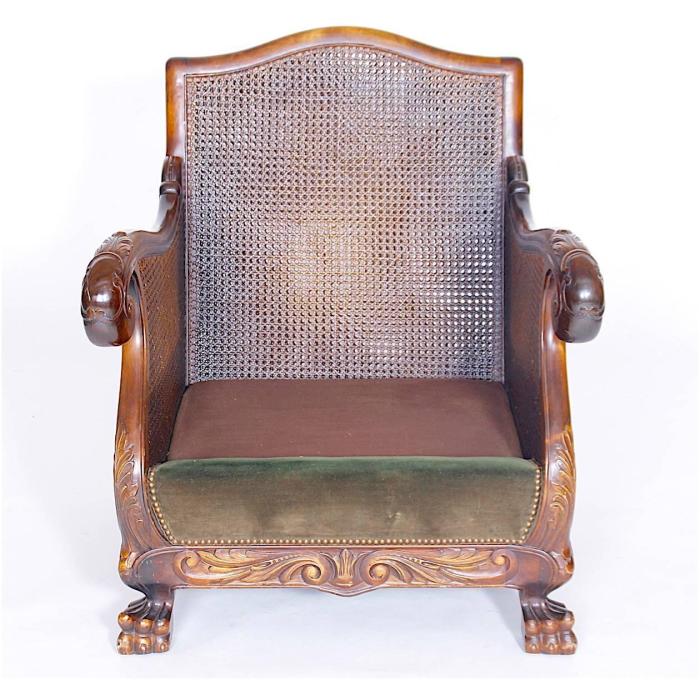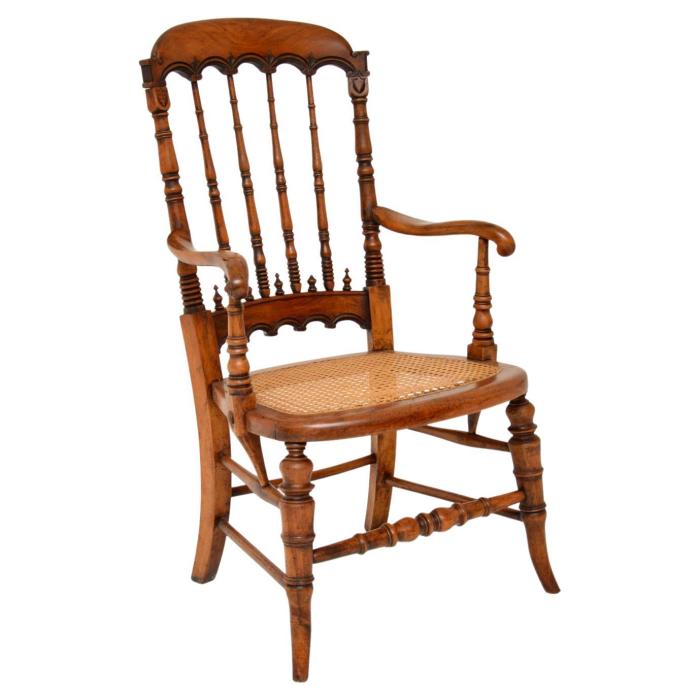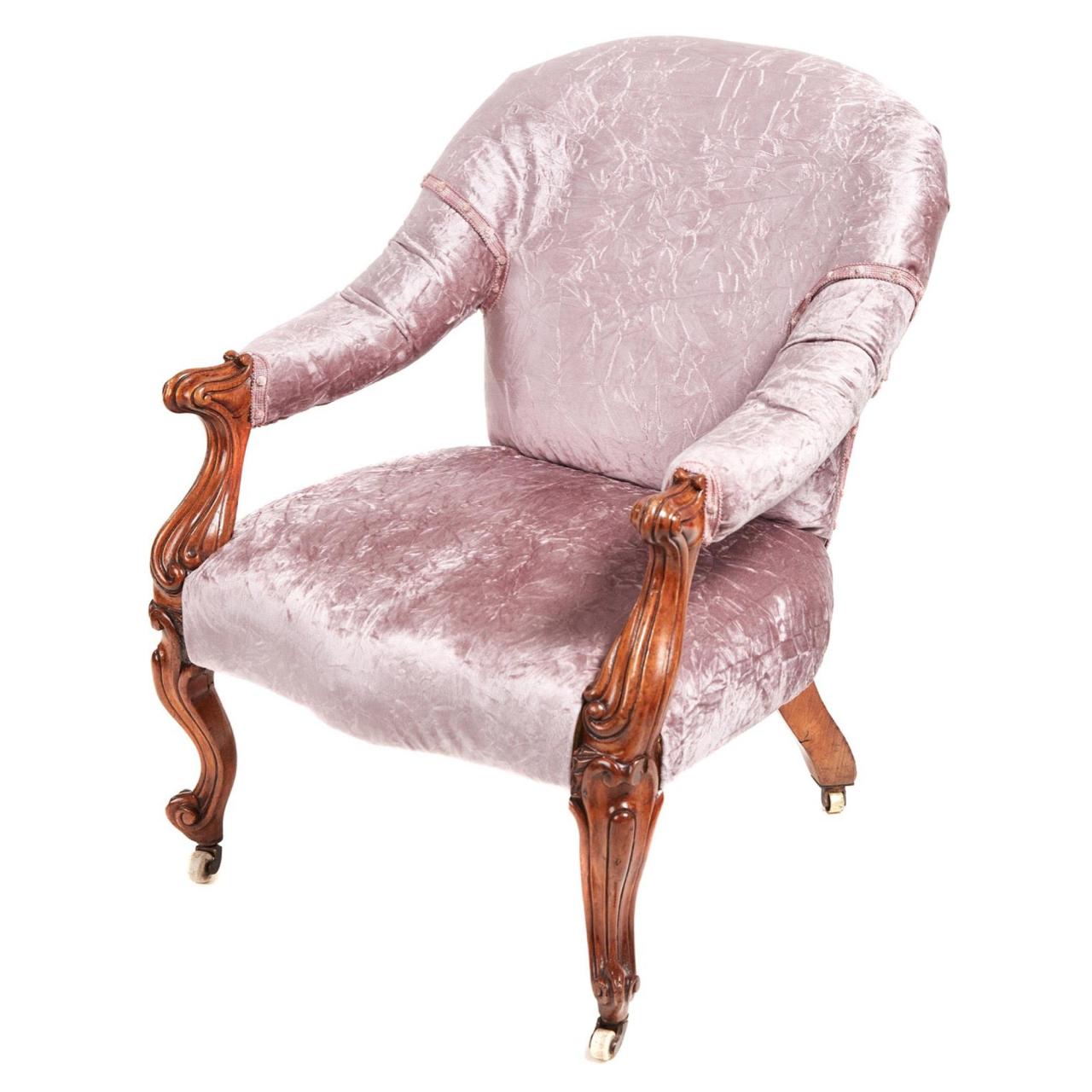Vintage classic armchair furniture with carved legs represents a timeless elegance, blending historical craftsmanship with enduring comfort. These pieces, often handcrafted from fine woods, showcase intricate detailing and superior construction, reflecting the artistry of bygone eras. Their enduring appeal stems from a combination of aesthetic beauty and practical functionality, making them cherished additions to any home.

The carved legs are a defining feature, often showcasing intricate designs ranging from simple flourishes to elaborate scrollwork. The wood itself, whether oak, mahogany, or walnut, contributes significantly to the chair’s character and overall value. These armchairs are more than just seating; they are statements of refined taste and a connection to the past.

The allure of a vintage classic armchair with carved legs transcends mere seating; it’s a statement piece, a conversation starter, and a testament to enduring craftsmanship. These chairs, often handcrafted from exquisite hardwoods, represent a bygone era of meticulous detail and timeless design. This comprehensive guide delves into the world of these captivating pieces, exploring their history, styles, materials, restoration, and care, ensuring you have all the information you need to appreciate, acquire, and cherish your own vintage gem.

A Journey Through Time: The History of Carved-Leg Armchairs
The history of the carved-leg armchair is rich and varied, reflecting evolving design aesthetics and technological advancements across centuries. Early examples, dating back to the 17th and 18th centuries, often showcased Baroque and Rococo influences, featuring ornate carvings, elaborate upholstery, and opulent materials like mahogany and walnut. The Victorian era saw a shift towards more elaborate designs, with intricate carvings depicting floral motifs, mythical creatures, and geometric patterns.
The Art Nouveau and Art Deco periods introduced cleaner lines and stylized forms, while mid-century modern designs embraced simpler silhouettes and functionality.

Key Historical Periods and Their Influence:
- Baroque (17th-18th Centuries): Characterized by opulent ornamentation, curves, and gilded accents.
- Rococo (18th Century): A lighter, more playful style than Baroque, with asymmetrical designs and shell motifs.
- Victorian Era (19th Century): Known for its elaborate carvings, plush upholstery, and a wide range of styles, from Gothic Revival to Neoclassical.
- Art Nouveau (late 19th-early 20th Centuries): Celebrated flowing lines, organic forms, and nature-inspired motifs.
- Art Deco (1920s-1930s): Defined by geometric shapes, streamlined silhouettes, and luxurious materials.
- Mid-Century Modern (mid-20th Century): Emphasized functionality, clean lines, and the use of new materials like plywood and molded plastic.
Identifying Styles and Materials: A Collector’s Guide
Identifying the style and materials of your vintage armchair is crucial for proper care and accurate valuation. Pay close attention to the following:
Identifying Wood Types:, Vintage classic armchair furniture with carved legs
- Mahogany: A rich reddish-brown wood known for its durability and beautiful grain.
- Walnut: A dark brown wood with a distinctive figure, often used in high-end furniture.
- Oak: A strong, durable wood with a light to medium brown color, often featuring a prominent grain.
- Cherry: A reddish-brown wood that darkens with age, known for its smooth texture.
Recognizing Carving Styles:
- Floral Motifs: Common in Victorian and earlier periods, featuring roses, leaves, and other botanical elements.
- Geometric Patterns: Popular in Art Deco and mid-century modern designs, characterized by clean lines and repeating shapes.
- Acorn and Leaf: A common motif found across various periods, particularly in more traditional styles.
- Mythological Creatures: Found in more ornate Baroque and Rococo pieces, often depicting cherubs, griffins, or other fantastical beings.
Upholstery Considerations:
The upholstery can significantly impact the chair’s overall style and value. Look for original fabrics, such as damask, velvet, or tapestry, which can be valuable indicators of age and authenticity. Consider the condition of the upholstery; significant wear and tear can affect the chair’s value.
Restoration and Care: Preserving Your Heirloom
Restoring and maintaining a vintage armchair with carved legs requires careful attention to detail. Minor repairs, such as tightening loose joints or patching minor scratches, can often be done at home. However, more extensive restoration work, such as reupholstering or repairing significant wood damage, should be entrusted to a professional furniture restorer. Regular cleaning and polishing will help preserve the chair’s beauty and longevity.
Cleaning and Maintenance Tips:
- Dust regularly: Use a soft cloth or brush to remove dust and debris.
- Polish wood surfaces: Use a high-quality furniture polish specifically designed for wood.
- Protect from direct sunlight: UV rays can fade wood and fabric.
- Use coasters and placemats: Prevent scratches and water stains.
- Avoid harsh chemicals: Use mild cleaners only.
Finding and Valuing Your Perfect Piece
Acquiring a vintage classic armchair with carved legs can be a rewarding experience. Antique shops, flea markets, online auction sites, and estate sales are all excellent places to find these unique pieces. When evaluating a chair’s value, consider its age, style, materials, condition, and provenance (history of ownership). Consulting with an appraiser or expert can provide a more accurate valuation.
Frequently Asked Questions (FAQ)
- Q: How can I tell if a carved-leg armchair is antique? A: Look for hallmarks such as construction techniques, wood types, carving styles, and any maker’s marks. Consulting with an antique appraiser is always recommended.
- Q: What type of wood is best for carved-leg armchairs? A: Hardwoods like mahogany, walnut, oak, and cherry are commonly used due to their durability and ability to hold intricate carvings.
- Q: How do I clean the upholstery of my vintage armchair? A: Always check the upholstery tag for cleaning instructions. For delicate fabrics, professional cleaning is often recommended.
- Q: How much should I expect to pay for a vintage carved-leg armchair? A: Prices vary greatly depending on the chair’s age, condition, style, and maker. Research similar pieces to get an idea of market value.
- Q: Where can I find a professional furniture restorer? A: Search online for local furniture restorers or contact antique dealers for recommendations.
Resources
- LiveAuctioneers (Online auction site for antiques and collectibles)
- 1stdibs (Online marketplace for high-end antiques and design)
- Invaluable (Online auction platform for fine art and antiques)
Call to Action: Vintage Classic Armchair Furniture With Carved Legs
Ready to add a touch of timeless elegance to your home? Start your search for the perfect vintage classic armchair with carved legs today! Explore online marketplaces, visit local antique shops, and let the hunt begin. Find the piece that speaks to you and makes a statement in your living space.

Key Questions Answered
How can I tell if a vintage armchair is genuine?
Look for hallmarks of quality craftsmanship like dovetail joints, hand-carved details, and the use of high-quality wood. Research the maker’s marks and compare to known examples. A reputable antique dealer can provide expert authentication.
How do I clean and care for a vintage armchair?
Regular dusting with a soft cloth is essential. For upholstery, use appropriate cleaning solutions and techniques based on the fabric type. Avoid harsh chemicals. Consider professional cleaning for delicate fabrics or significant soiling.
What is the typical price range for vintage armchairs with carved legs?
The price varies greatly depending on the age, maker, wood type, condition, and style. Expect a wide range, from a few hundred to several thousand dollars.
